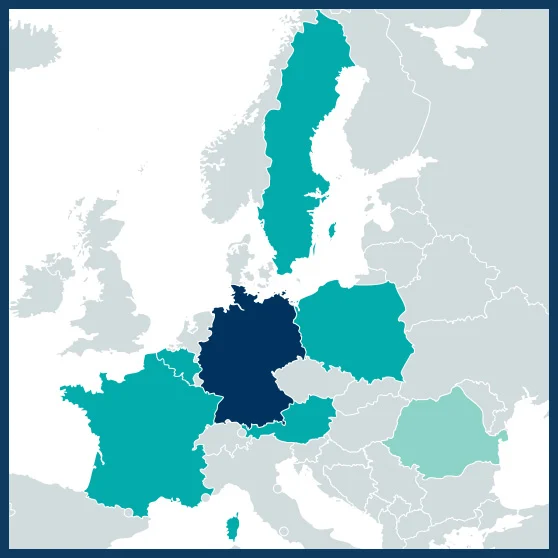01/02/2021 – 31/01/2024
€1,740,000
Dr. Frank Rasche
frank.rasche@uni-hohenheim.de
Coordinator: Institute of Agricultural Sciences in the Tropics (Hans-Ruthenber- Institute) – University of Hohenheim – Stuttgart – Germany
Environmental Biotechnology – Graz University of Technology – Graz – Austria
Plant Sciences – Liège University, Gembloux Agro-Bio Tech – Gembloux – Belgium Agroecology and Environment – ISARA Lyon – Lyon – France
Soil Sciences – University of Trier – Trier – Germany
Microbiology – Nicolaus Copernicus University -Torun – Poland
Horticulture – Sapientia Hungarian University of Transylvania – Cluj-Napoca – Romania
Ecology, Environment and Plant Sciences – Swedish University of Agricultural Sciences – Alnarp – Sweden

The impact of intense annual crop production on natural resources under the threat of climate change has resulted in a global magnification of environmental degradation and biodiversity loss. A concept for mitigating such consequences is the development of perennial grain cropping systems. Intermediate wheatgrass (Thinopyrum intermedium L.) is among the most advanced examples of recently developed perennial grain crops for food or forage production with established experimental sites across Europe. Informed by natural ecosystems, especially grasslands, such systems provide an excellent and innovative design to promote nature-based solutions (NBS) to mitigate agricultural disservices and provide ecological, social and economic benefits. With a permanent soil cover, high total biomass production and deeper root systems, perennial grain crops provide fundamental advantages for climate change mitigation and adaptation. Perennial grain crops support highly structured and complex food webs, improving the functional diversity and the conditions for its conservation. However, there is only limited understanding of biodiversity effects, crop performance and ecosystem services resulting from these systems. The vision of NAPERDIV is thus to investigate and introduce perennial grain crops as an NBS for innovative and future-proof agricultural systems in Europe to move from current crop production towards sustainable alternatives acknowledged by the EU’s agricultural and environmental legislation.
NAPERDIV is founded on comparative analyses between established perennial versus annual grain cropping systems along a Pan-European gradient with different agro-ecological and climatic conditions. With an inter-disciplinary and multi-sectoral network of researchers and stakeholders across Europe, NAPERDIV pursues the following objectives:
• Analyse the agronomic performance of intermediate wheatgrass to assess and simulate its resilience against climate hazards.
• Characterise the crop-associated microbiome and its functional benefits for the system, and the resilience of the soil microbiome against expected climate variability.
• Assess the biodiversity of soil and soil-dwelling invertebrates, its benefits and indicator values for crop performance, system diversity and processes.
• Improve the understanding of ecological and economic benefits of perennial grain cropping systems among stakeholders (farmers, politicians, general public) to realize perennial grain crops adoption and legitimization, and the creation of value chains.
The multiple impacts of NAPERDIV on environment, policy, society and economy will support the EU to strengthen its role as world leader both in research and innovation by:
•Contributing to a sustainable, nature-based agriculture with benefits for biodiversity and climate change adaptation and mitigation as a solid scientific baseline for legislative frameworks of the EU for future-proof solutions in agricultural production.
• Contributing to nutrition security and generate novel bio-economic opportunities with investment potentials by increasing the awareness of farmers, EC policy, industry, and the general public about the manifold benefits of perennial grain cropping.
•Identifying requirements, limitations, expectations and perspectives for perennial cropping through interaction with diverse stakeholders and following the interactive innovation model promoted by the EC; and regularly informing stakeholders about project progress to improve engagement and sensitization.